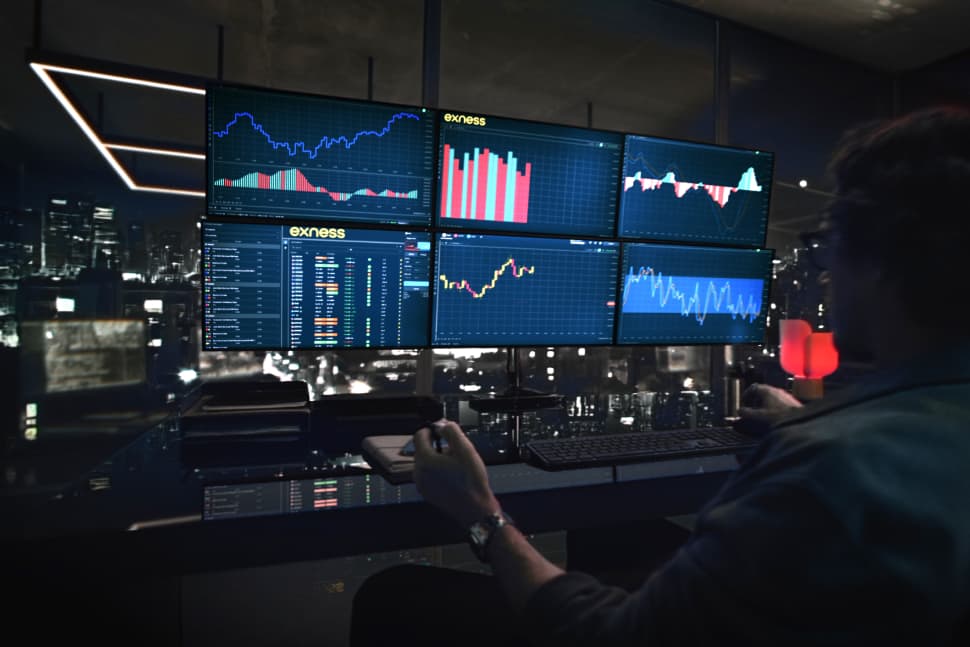
- All Instrument Types
- Indices
- Equities
- ETFs
- Funds
- Commodities
- Currencies
- Crypto
- Bonds
- Certificates
Please try another search

Why trading strategies should always consider changing market conditions
Changing markets can disrupt even the most well-laid plans. Here’s how to adjust and come out on the other side.

Most trading strategies are a roadmap that helps traders manage risk while setting goals they’d like to achieve. Some are very specific: defining entry and exit points, stop out and take profit ranges, specific assets to be traded, timeframes, and the amount dedicated to each trade or position. Other strategies are a bit more general, focusing more broadly on asset classes (i.e., currencies, metals, commodities, etc.) and their overall profit-to-loss ratio.
Almost all strategies have something in common, though. No matter how good your positioning is, you should always adapt your trading to changing market conditions, and Exness can help you do that. With tight and stable spreads*, advanced trading tools, and fast execution**, you’ll definitely have an edge. Here are several other factors to consider to ensure your strategy remains effective when markets are moving.
Flexibility is key
Every trader needs the ability to quickly adjust and adapt when markets are active. This skill helps them avoid unnecessary market exposure and take advantage of emerging market trends. Flexibility also allows investors or traders to protect their open trades by closing them, opening counterbalancing positions, or mitigating negative movements. This strategy, commonly known as "hedging," is especially beneficial in volatile markets.
For example, currencies experience significant price swings, which certain strategies like scalping see as beneficial and even use to their advantage. These movements may become unpredictable or amplified by market uncertainty, making it much riskier to act on. In this situation, a flexible trader might avoid a price movement that they would normally use as an opportunity. A rigid strategy, or rather a “rigid” trader, would likely still execute the trade irrespective of the current conditions.
Using tools like the Exness Trading Calculator can help traders make more educated and strategic decisions while becoming more flexible when necessary.
Historical data is valuable when you’re adaptable
Most strategies use past data, repeating chart patterns, or technical indicator signals, which are all based on historical price performance. These are extremely valuable insights, but as even the most capable technical trader will tell you, there is no such thing as an absolute solution on the markets. This is why most technical traders use a combination of complementary technical indicators to develop and deploy their strategies.
Although technical traders depend on historical data, they never ignore changing markets and follow that data blindly. Strategies that ignore market conditions for the sake of strictly following historical data will likely fail.
Not managing market exposure
Managing market exposure, also known as risk management, should always be included in a trading strategy. Although this is a widely known fact, it is one of the most overlooked aspects of trading. Even more perplexingly, not managing market exposure is one of the most frequently cited reasons why trading strategies fail.
At a very low level, there are multiple ways to manage risk, one of which is to use stop loss or take profit orders. The first closes an open trade when it reaches a maximum loss, and the second type of order closes a profitable trade. Stop loss protects your account and other open trades from “runaway” losses, while take profit protects your profitable trade from a potential reversal.
Exness offers advanced tools, like stop loss and take profit orders, automatic trading, and real-time analytics, which enable its traders to manage their risk effectively and adjust and adapt to changing market conditions.
Trading with emotion, and not following your plan
After refining your strategy by incrementally optimizing it, you might think the hardest part is behind you. Well, not really: your strategy is only useful when you stick to it. One of the most frequently noted reasons strategies and traders fail is emotional trading. This phrase describes any impulsive trading behavior motivated by negative or detrimental emotions.
Overconfidence after a long winning streak, greed, which causes traders to keep positions open until the very last moment, opening larger trades or overleveraging accounts, and revenge trading (i.e., trading to recover capital after a series of losses) can have catastrophic results, which can be amplified by rapidly changing market conditions.
Diversification is key
Institutions and organizations often spread their investments across different asset classes and markets because this averages out losses and allows other instruments that are negatively correlated to counteract price drops.
When markets are less volatile, diversification does the opposite, i.e., it may bolster earnings if a certain asset or investment is moving sluggishly. A great example of this is gold, currencies, and stocks (or equities). Gold usually moves in the opposite direction to stocks and currencies. So when gold is going down, that is counterbalanced if a portfolio has currency or stock positions, and the inverse scenario as well.
How to trade bullish and bearish markets
Markets trending upwards are known as bullish, and those trending downwards are usually called bearish. Regardless of the direction the market is moving, ensure that the trend is confirmed by using a combination of technical indicators, as sometimes new trends are only corrections.
Another good idea is to set a stop loss order, especially when markets are volatile, at the level of market exposure you are comfortable with relative to the expected return.
Keep working on your strategy
Traders should approach their strategy as a living and constantly evolving part of their market activity. A good strategy is tested and repeatable to a certain extent, and it manages risk effectively. Of course, education, knowledge, and data can go a long way when you are trading, so never stop browsing financial media and social channels for any news or updates.
If you have any questions about trading or the analysis tools Exness offers, head over to the website.
* Tightest and most stable spread claims refer to the lowest maximum spreads and the tightest average spreads on the Exness Pro account, for XAUUSD, USOIL, and BTCUSD, based on data collected from 25 August to 7 September 2024, when compared to the corresponding spreads across commission-free accounts of other brokers. Spreads may fluctuate and widen due to factors including market volatility and liquidity, news releases, economic events, when markets open or close, and the type of instruments being traded.
** Delays and slippage may occur. No guarantee of execution speed or precision is provided.






